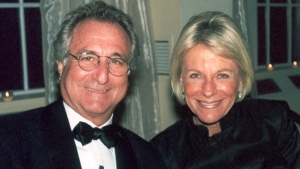 From 1960 until he was finally arrested in 2008, Bernard L. Madoff was the chairman of Bernard L. Madoff Investment Securities LLC. Over the years, the company eventually grew to become one of the largest companies of its kind in the world. Madoff’s company gained a reputation for making amazing returns for all of their investors.
From 1960 until he was finally arrested in 2008, Bernard L. Madoff was the chairman of Bernard L. Madoff Investment Securities LLC. Over the years, the company eventually grew to become one of the largest companies of its kind in the world. Madoff’s company gained a reputation for making amazing returns for all of their investors.
For many people in the investment world, it seemed that the returns that Madoff routinely promised and eventually paid to his investors seemed too good to be true. As with most things in life, when something seems too good to be true, it probably is. As it turns out, Bernard Madoff had been running the largest Ponzi scheme in history for more than three decades. It is estimated that Madoff investors lost a total of $18 billion when it was exposed.
An excellent reputation
One of the reasons the scheme was successful was the fact that Madoff ran a legitimate business for the first 15 years that his company was in existence. During these crucial years, Madoff was able to make many influential contacts that would eventually benefit him greatly once his Ponzi scheme was in full swing. Some of these influential contacts came in the form of politicians.
He also was on good terms with the Securities and Exchange Commission. Years later, Madoff’s friendship with the SEC would allow his scheme to keep running for an additional 16 years. The rich and famous flocked to Madoff’s company. Director Steven Spielberg, actor Kevin Bacon and Fred Wilpon, one of the owners of the New York Mets beseball team, all lost money as a result of Madoff’s criminal activities.
How the scheme worked
Somewhere around 1974 or 1975, Madoff made the decision to turn his business into a highly illegal finance scam called a Ponzi scheme. While his company was doing well already, the money that could be potentially earned from this type of criminal activity was far more than he was making at the time. The term “Ponzi scheme” comes from Charles Ponzi, a con artist who developed this method in the early 1920s. The scheme is started when a person or company promises investment returns that are far greater than any of the other investment firms. As an added incentive, the returns are promised in a short period of time. This makes the offer harder to resist for potential investors.
Investors will deposit their money into the investment company, believing that the company is using their money to make wise and profitable investments. In reality, the money is not being invested at all. Fake investment information and trading reports are created and given to investors to make them think that their money is growing. In Madoff’s case, a computer program was used to manipulate account statements and backdate trades.
Whenever an investor would request some or all of the money from their account, there was always enough money in the central fund to pay the investors, even though no profits were being made on the deposited money. This was due to the fact that people would usually not take all of the money out of their account at once. Therefore, money from investor A could be used to pay off investor B, and so forth.
The beginning of the end
In 1992, the SEC received reports of possible fraud going on at Madoff’s company. Two investors filed a complaint. Madoff returned their money to them. Because of Madoff’s stellar reputation, the SEC did not do any further investigating. The scheme continued until 2008. At the time, the economy in the United States was in a free fall, especially the banking and housing industries.
Because of this, a large amount of investors wanted to withdraw their money from Madoff’s company during a very short period of time. The success of the scheme depended on the fact that many people would keep their money invested to allow other investors to be paid off. However, with so many investors demanding their money at once, Madoff did not have the necessary funds to pay them. It was at this time that Madoff’s Ponzi scheme was finally exposed.
Arrest, sentencing and fallout
Bernard Madoff was arrested on December 11, 2008. He was charged with securities fraud. He was eventually sentenced to 150 years in federal prison. His family’s assets were seized and sold to repay money to Madoff’s victims. A trustee was put in charge of recovering as much of the money as possible and returning it to defrauded parties. Mark Madoff, the 46-year-old son of Bernard, hanged himself on the second anniversary of his father’s arrest. He had always claimed he knew nothing about his father’s criminal activities.
